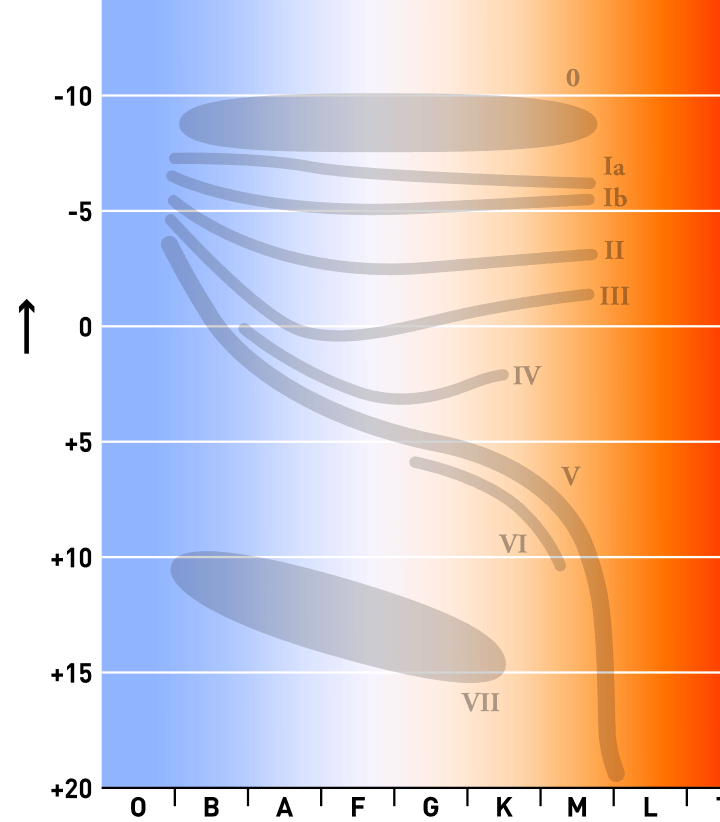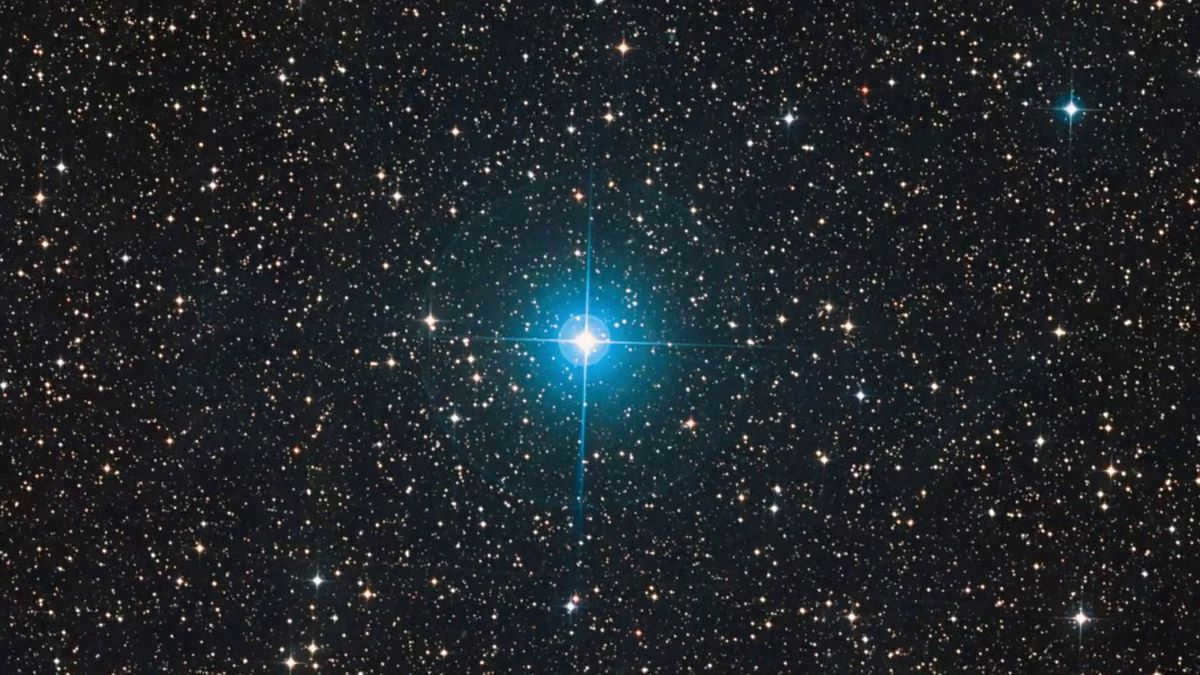
The stars that twinkle in the dark expanse above us provide a mesmerizing display that holds many secrets and enigmas. They are not merely symbols of romance, but also colossal celestial entities, engaged in a competition of unfathomable proportions. Hence, one cannot help but wonder: what is the appellation of the most massive star in the cosmos?
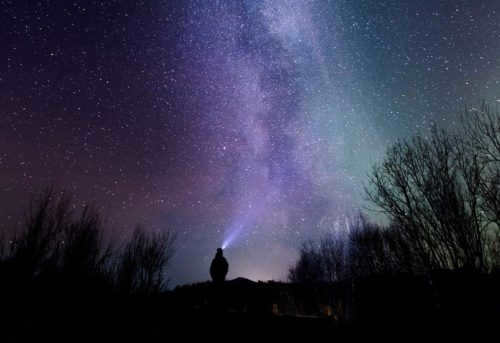
What exactly is a star?
What exactly is a celestial object known as a star? As far back as ancient times, individuals endeavored to commit the positions of stars to memory by drawing comparisons to animal figures or human body parts. This is the origin of constellations, the majority of which continue to exist today.
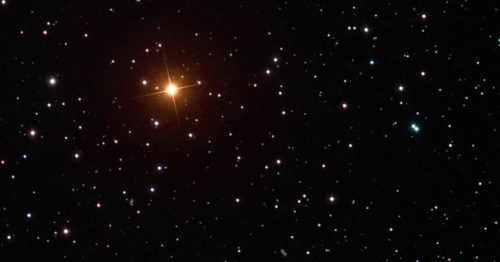
In the modern era, individuals have the freedom to observe celestial objects through the use of a telescope or marvel at the stars firsthand.
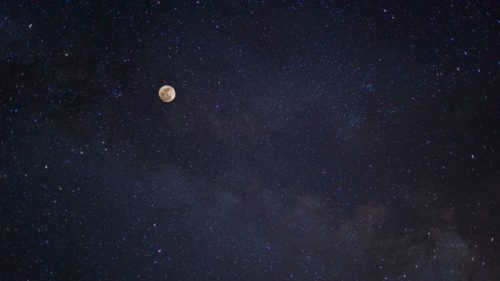
However, what sets stars apart is that they can only be observed in three specific galaxies: the Milky Way, the Triangle, and Andromeda.
In order to observe celestial bodies from other galaxies, one requires the use of high-powered telescopes.
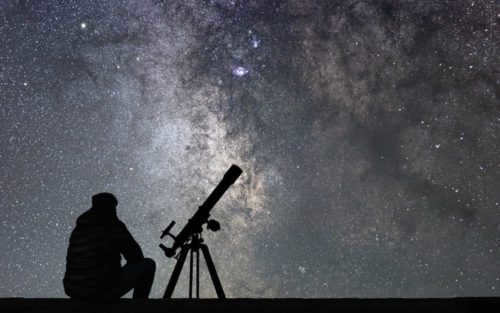
Stars, massive celestial bodies composed mainly of gas, radiate luminous energy due to the extreme heat generated within their core and on their surface. The temperatures are so intense that even metallic substances in their vicinity undergo a transformation into a gaseous state, enveloping the stars.
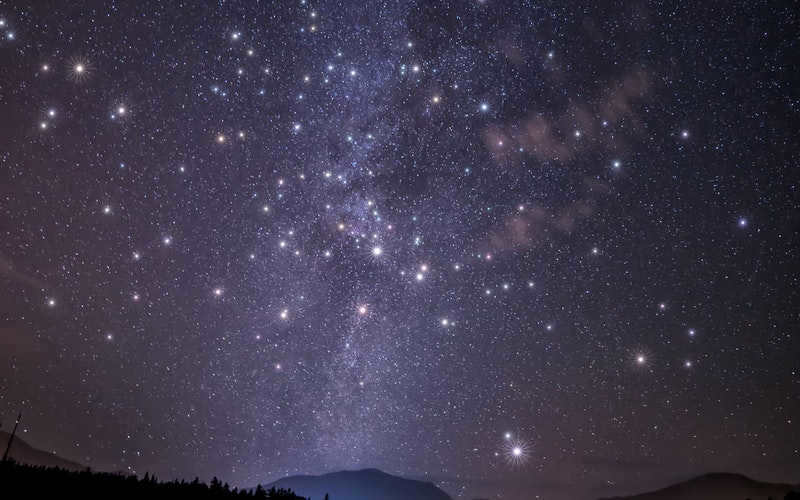
The universe contains an immense amount of stars, with billions of them residing in our very own Milky Way galaxy, which is home to our Sun.
Classification of stars
Stars are categorized based on their brightness. The most luminous stars are known as “alpha” stars, while the less bright ones are referred to as “beta”, “gamma”, and so on, following the Greek alphabet.
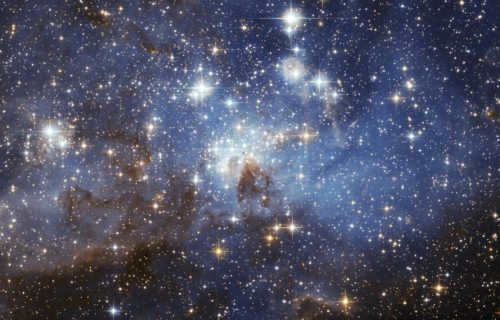
Moreover, newly discovered celestial objects often receive specific abbreviations and codes in order to be catalogued and studied. These codes include information about the star’s type, its coordinates in terms of latitude and longitude, and other relevant details. Additionally, certain stars are identified by their color and size.
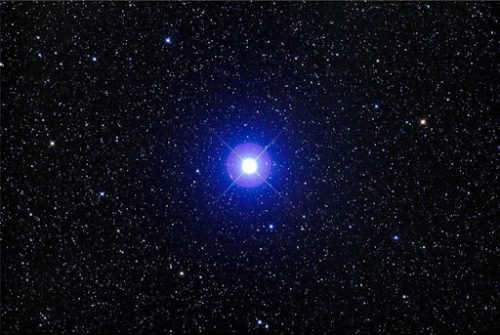
However, the most crucial aspect is that every star is categorized into specific types, providing us with a glimpse into the extraordinary and distinctive nature of celestial objects.
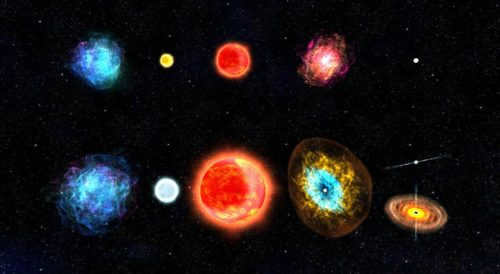
Protostar
A protostar is the initial phase in the formation of a star. At this stage, it is a conglomerate of gas which gradually starts to emit energy. The protostar undergoes a transformation over a span of 100,000 years.
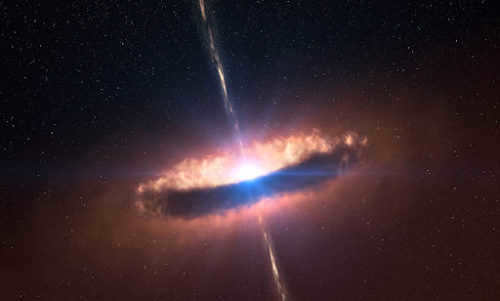
Similar to a T-Taurus
The second phase of development. The entity is not yet classified as a complete star. There is insufficient accumulation of gases inside to generate the required pressure.
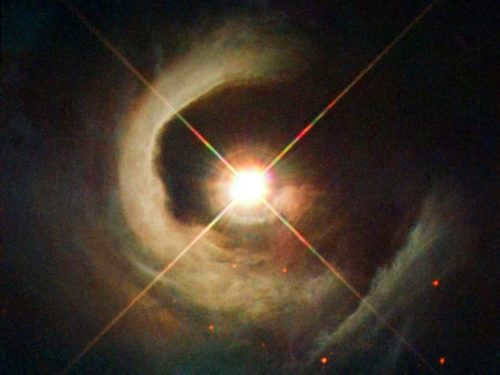
There are no signs of nuclear reactions occurring in these stars. Instead, they emit flares, spots, and powerful gusts of winds. This phase of their development lasts for approximately 100000 million years.
The main sequence
Our Sun is among the stars that belong to the main sequence. This is the phase during which gas spheres consistently convert hydrogen to helium, possessing size, luminosity, and immense weight.
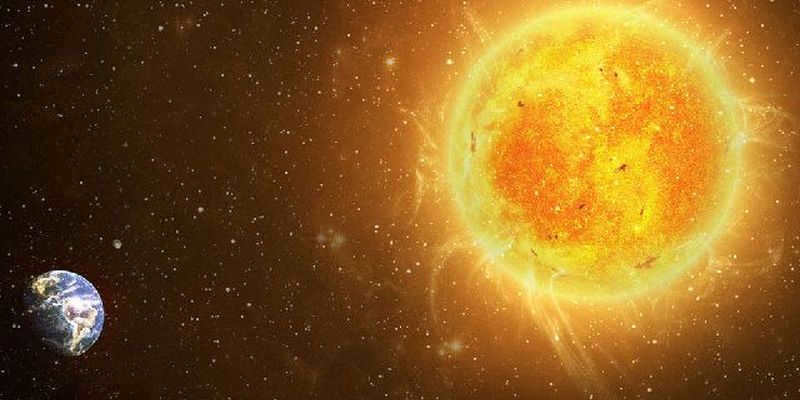
Stars experience continuous bursts of energy.
The contraction caused by gravity within celestial bodies is counteracted by nuclear reactions, which promote expansion.
As a result of this equilibrium, the stars maintain their spherical shape.
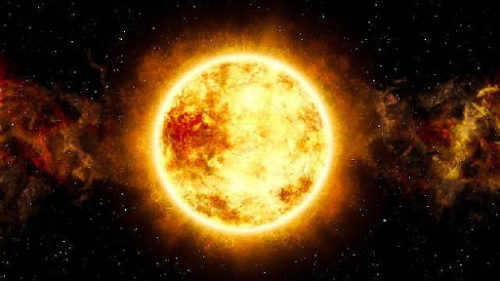
The majority of stars in the Universe belong to the Main Sequence category.
White dwarfs
As time passes, when a star runs out of internal fuel, it lacks sufficient mass to sustain a nuclear reaction.
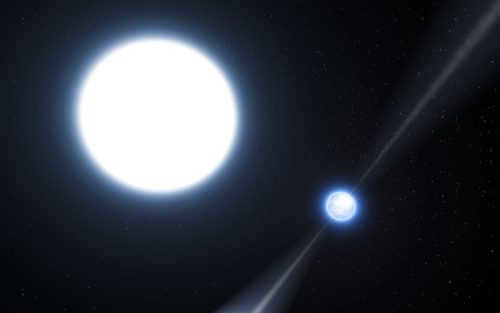
The star’s size decreases as a result of its internal gravitational forces, while its core’s high temperature causes it to emit a constant white light.
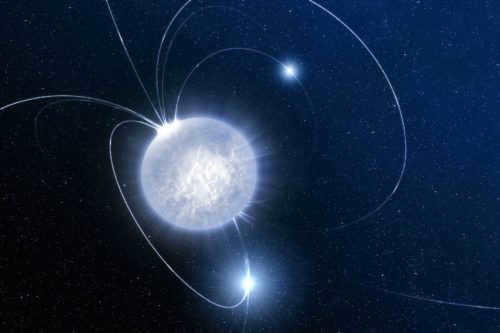
Red dwarfs
When the mass of an object decreases significantly, it transforms into a red dwarf.
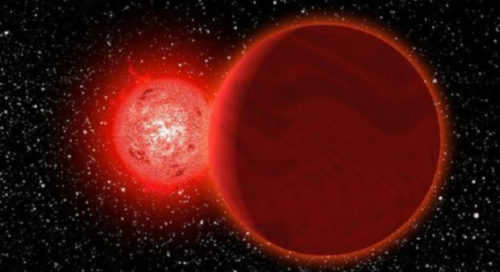
As a result, the luminosity of the star diminishes and it starts to utilize its fuel more efficiently. This prolongs the lifespan of the dwarf. Scientists speculate that stars in this phase could potentially survive for up to 10 trillion years.
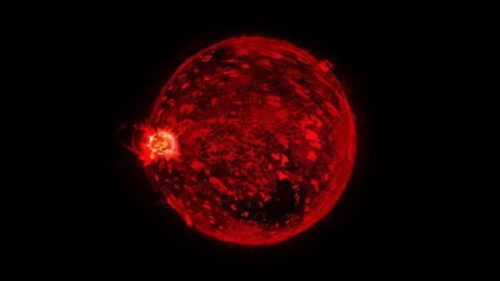
Brown dwarfs
These are celestial bodies that fall in between the size of planets and stars.
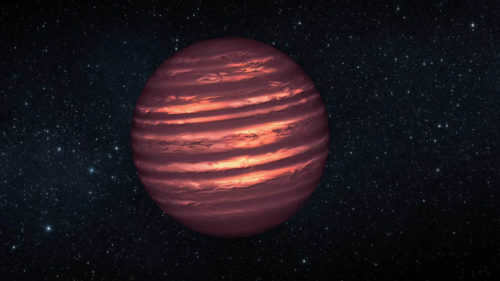
These stars differ slightly from typical stars in terms of their functionality because they do not possess the necessary temperature and pressure to initiate a nuclear reaction.
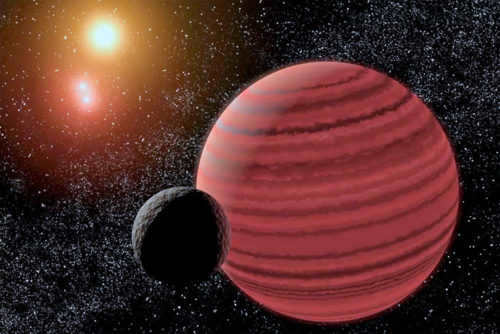
Red giants
Red giants are characterized by the depletion of fuel within their gas balloons, which results in the lack of external pressure. Consequently, the pressure inside the star increases, causing it to shrink and expand in size.
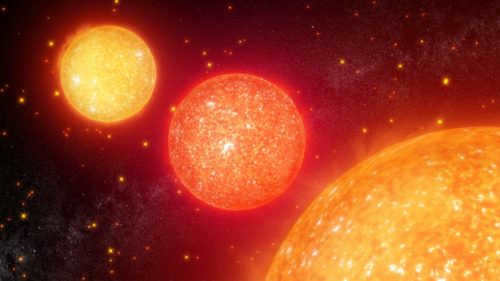
The star’s outer appearance may not reveal it, but internally, a powerful process is taking place.
Once the hydrogen fuel is depleted, the star’s core ignites and sustains its lifespan, as helium and other heavier elements begin to undergo fusion reactions.
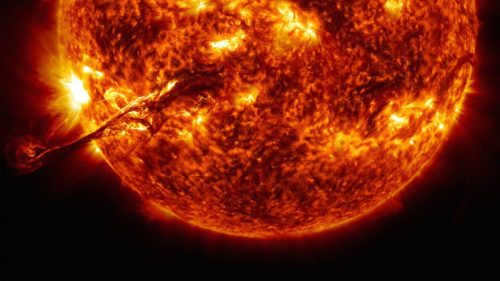
During this phase, the star can expand to nearly 100 times its original size during the Main Sequence phase. This Red Giant stage can last for millions of years.
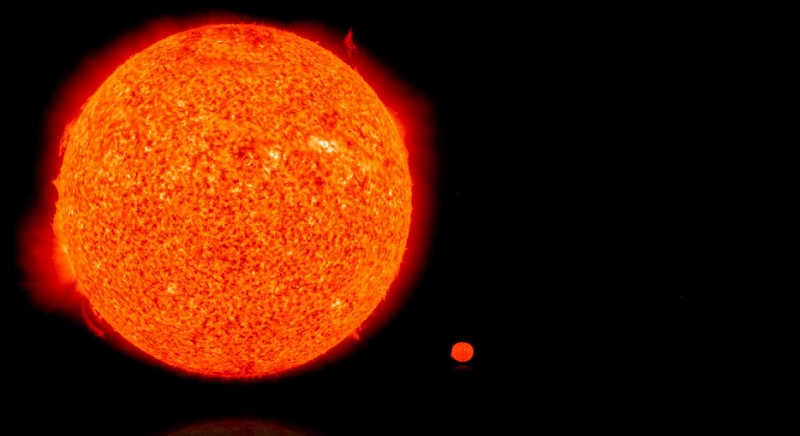
Giant Stars (hypergiants)
These celestial bodies are the most enormous entities found in the vast expanse of the Universe. Their immense proportions far exceed the magnitude of the Sun.
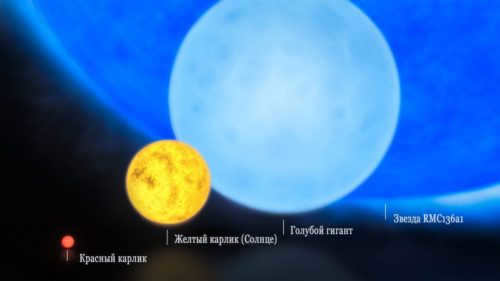
The life span of stars is determined by their size. The larger the star, the shorter its life span, as they expend much more energy for their life activities compared to dwarfs.
Scientists have discovered that supergiants have a lifespan of several million years.
Ultimately, these massive stars end their lives as supernovae.
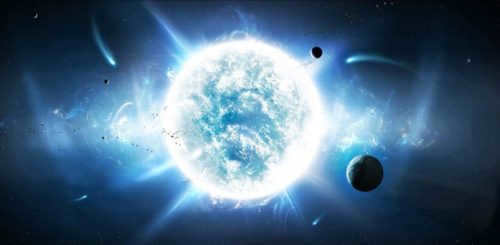
Supernovae
Explosions occur when stars with a mass 1.3-2 times that of the Sun reach the end of their lives.
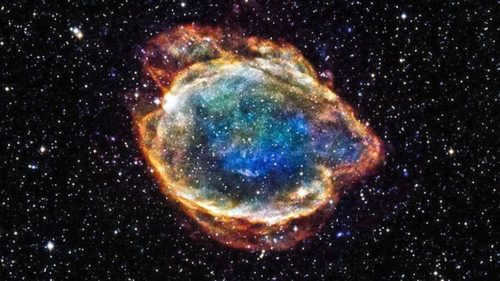
Hence, when a supernova occurs, it gives rise to a neutron star, which in turn retains a central core. In the case of a celestial body being more massive, it results in the formation of a black hole.
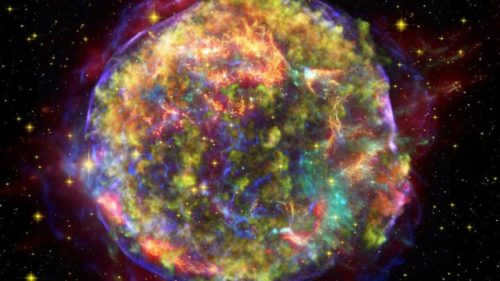
Cepheids
These are stars that pulsate, and they are characterized by their remarkable brightness.
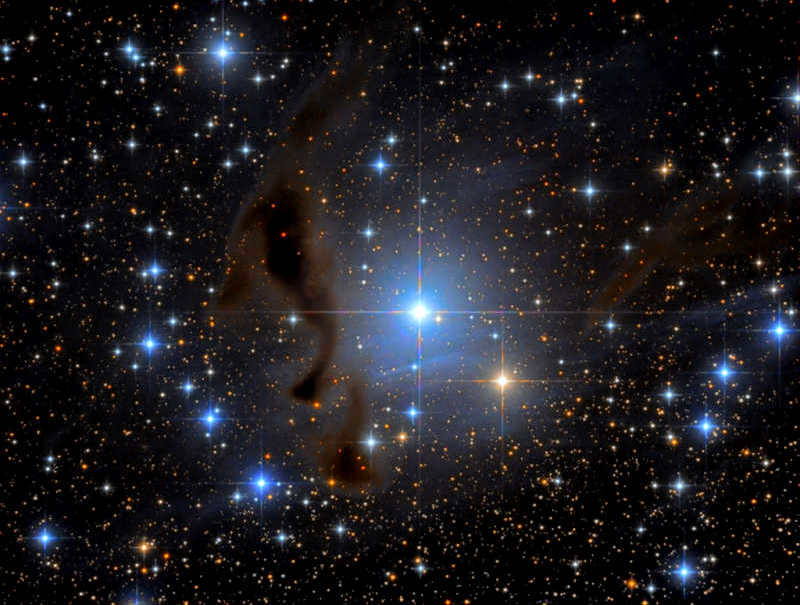
Due to this brightness, scientists have the ability to determine the gap between other celestial bodies, such as the gap to other galaxies.
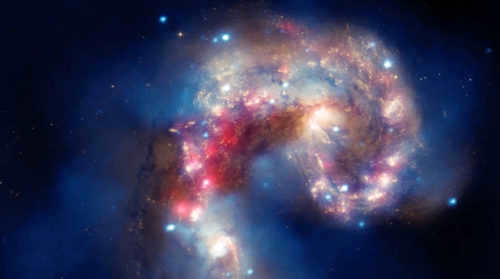
Twin stars
This is a celestial arrangement of stars that are drawn towards one another due to the force of gravity acting upon them.
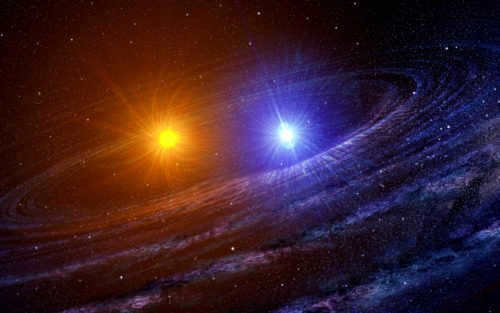

During this process, the celestial bodies have the ability to transfer their substances. As a result, one of the stars will become brighter and more massive, while the other will become smaller and less bright.
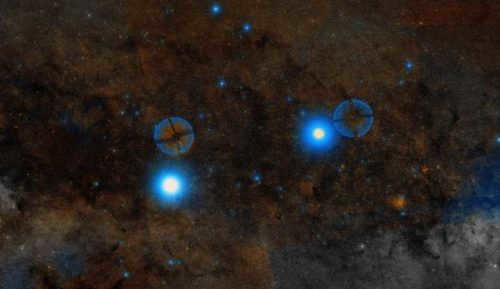
Various types of stars are created from protostars, each following its own unique evolutionary trajectory, as illustrated in the diagram:
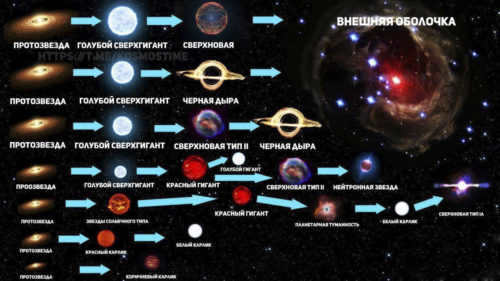
The Top 10 Biggest Stars in the Universe
Finding the brightest star in the universe is a challenging task, considering that only 1% of space has been explored so far. Moreover, the universe is constantly expanding, making it even more difficult to determine the true extent of its celestial bodies.
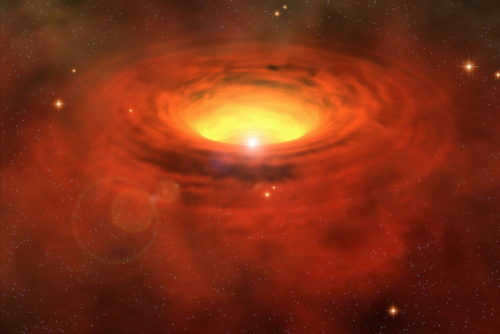
When it comes to celestial bodies, the Sun is undoubtedly the most dazzling star in the entire galaxy. Its radiance is so intense that it can momentarily impair our vision, leaving us temporarily unable to see clearly.
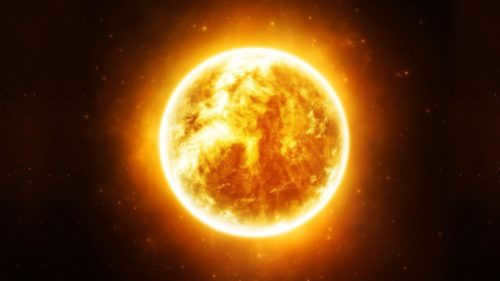
However, the largest star in the universe is not the Sun. The Milky Way galaxy is incredibly vast and enigmatic, making it a daunting task to create a concise catalog of its most remarkable and exceptional celestial bodies. Thus, we have assembled a prestigious selection of the most renowned and extraordinary stars.
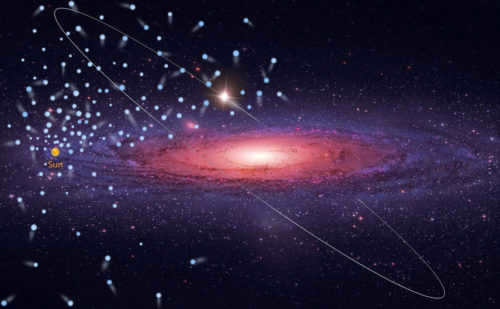
Polaris
Polaris, also known as the North Star, is a well-known pulsating Cepheid star. It is part of a triple star system and holds the distinction of being the closest and brightest star to our Earth.
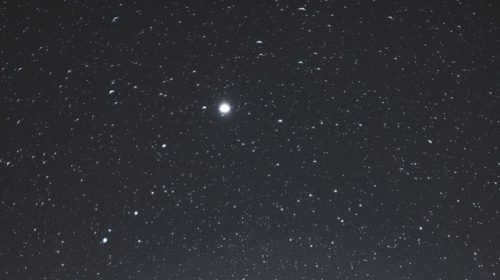
Polaris A, the central star of this system, is a supergiant that surpasses the Sun in size by 2000 times and in mass by almost 6.5 times. Its age is estimated to be around 55-65 million years.
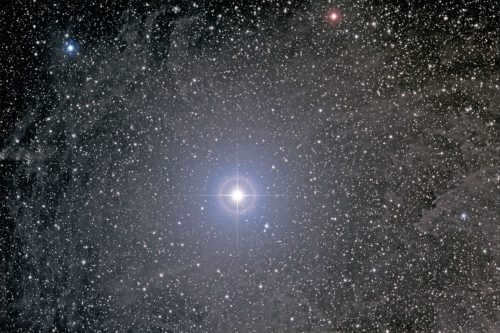
Following in the lineup is Polar B, which has a mass equivalent to 1.39 times that of the Sun. Positioned at a considerable distance from its primary star, it remains unaffected by the star’s brightness, allowing its own luminosity to shine through.
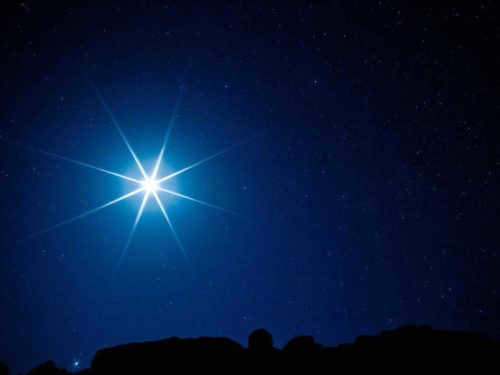
As a result, both stars are visible to the naked eye in the sky. The third star, Polaris P, has a mass of 1.26 times that of the Sun.
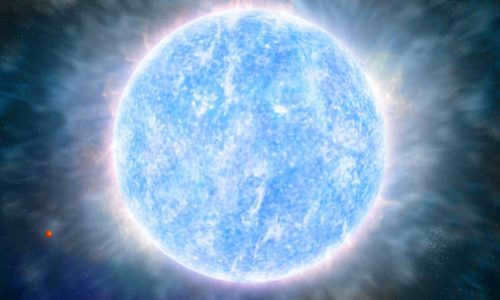
The A star is situated in such close proximity that it can only be observed and photographed by the Hubble telescope, and even then, only with precise calibration. R revolves around the A star for approximately three decades.
Aldebaran
The moniker for the celestial object was bestowed by the Arab astronomers, and in its translation signifies “the one who follows.”
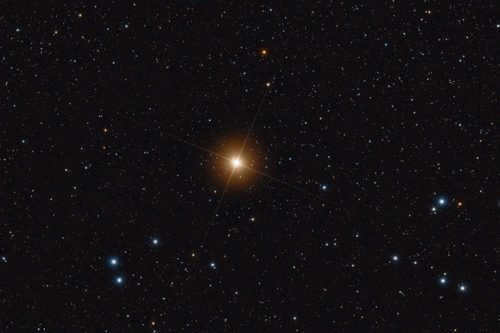
The absence of any external signs in stars is due to the fact that Aldebaran moves in accordance with the Pleiades star cluster. In terms of size, Aldebaran is 44 times larger than the Sun and shines 150 times brighter, but its color is orange.
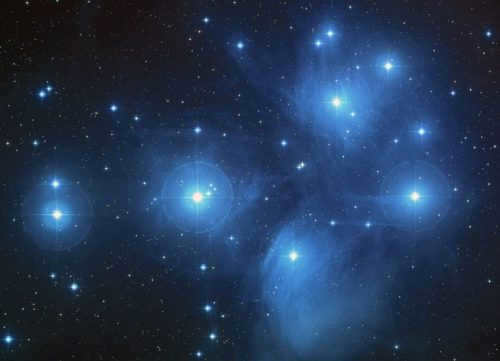
The surface temperature of Aldebaran is around 3700 degrees Celsius, which explains why it is the most luminous star in the zodiacal clusters and, as a result, in the constellation of Taurus.
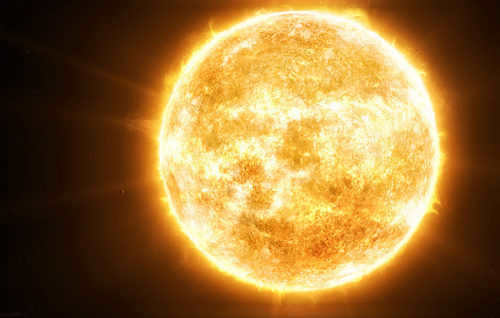
Due to its size and brightness, Aldebaran is also known as the “A of Taurus” in the constellation. It is considered to be the largest and brightest celestial body in the constellation. The tremendous distance between Earth and Aldebaran means that it would take 65 years to reach it if traveling at the speed of light.
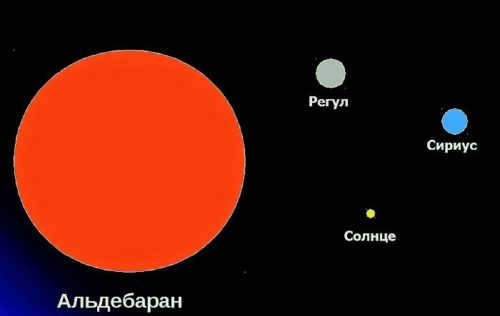
Rigel
Rigel is a star system believed to contain four celestial bodies. These objects are located within the Orion constellation and are situated at a considerable distance from Earth.
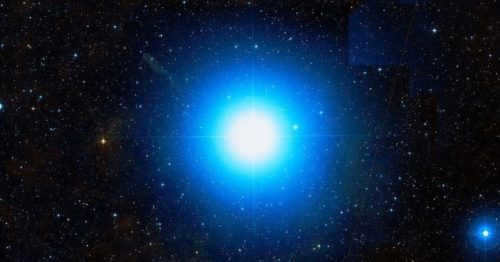
With a mass approximately 24 times greater than that of the Sun, the brightest star also shines with a brightness 120,000 times more intense. It boasts a scorching surface temperature of around 11,000 degrees Celsius.
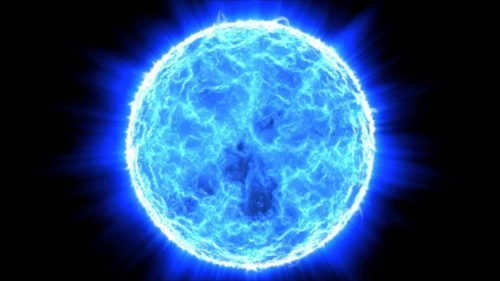
Scientists believe that Rigel is expending an excessive amount of energy and emitting an abundance of light, which may prevent its long-term survival.
Based on current information, it is estimated that the star is approximately 10 million years old.
There is a possibility that Rigel will continue to exist for a few more years, but eventually, it will undergo the supernova process.
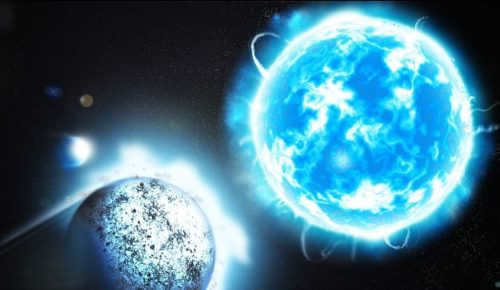
A-Riegel is ranked as the seventh most visible star from our planet. It is visible during winter in the northern hemisphere and during summer in the southern hemisphere.
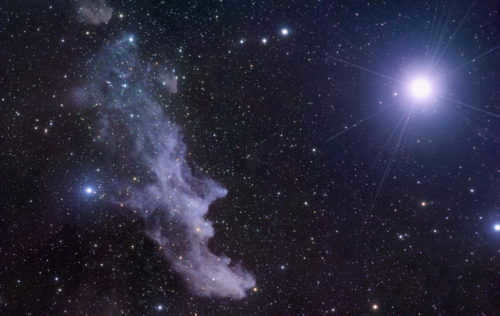
Pistol
The Pistol star is highly noticeable in the celestial sphere. With a mass of approximately 27 times that of the Sun, its radiance is incredibly intense, capable of emitting the same amount of light in just 20 seconds as our Sun does in an entire year.
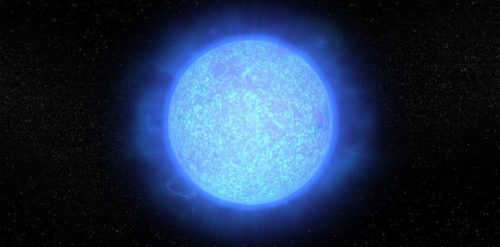
However, Pistol’s destiny bears resemblance to that of Rigel’s – scientists predict that she too will have a short life span due to her immense power. Currently, she is approximately 2 million years old, and in another 1-2 million years, it is highly probable that a black hole will replace this luminous star.
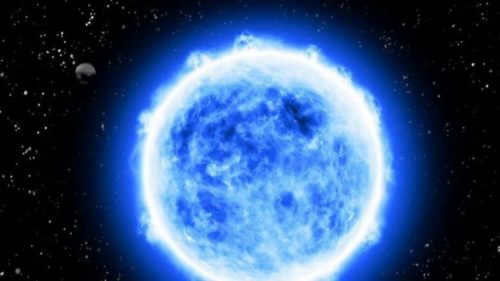
Betelgeuse
Betelgeuse, a red supergiant, has such an immense size that its mass is 300 million times greater than that of the Sun and its luminosity surpasses that of the Sun by 100,000 times. It is recognized as the ninth most luminous object in the night sky.
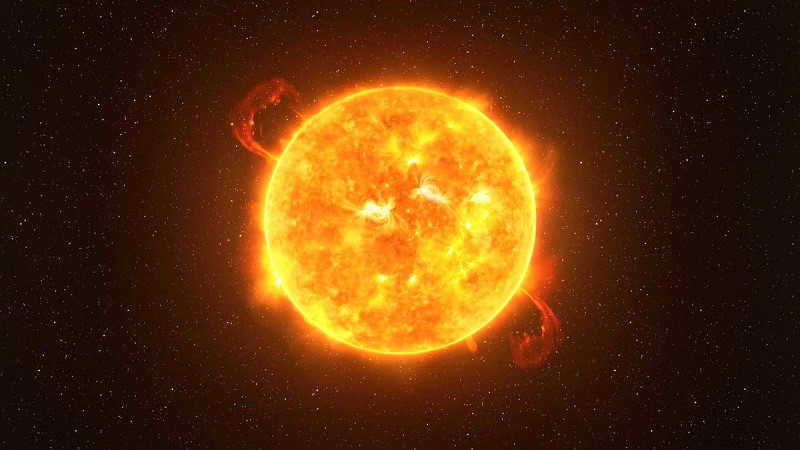
Scientists predict that the celestial body is on the verge of extinction and its demise will be accompanied by a spectacular event, resembling the brilliance of the Moon when observed from Earth. Betelgeuse exhibits a peculiar characteristic – its luminosity fluctuates without a clear explanation.
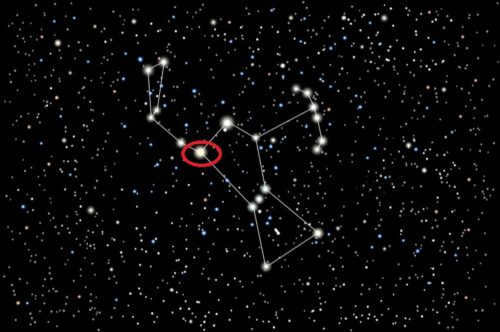
Antares
Antares is a red supergiant situated in the Scorpius constellation. If this massive star were positioned at the location of our Sun, it would be in close proximity to Jupiter within our solar system.
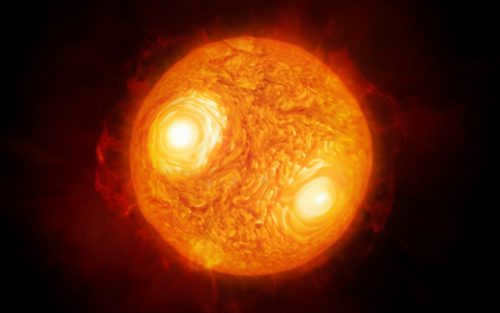
The brightness of Antares is nearly 50,000 times greater than that of our Sun. It has a surface temperature of approximately 18500 degrees Celsius.
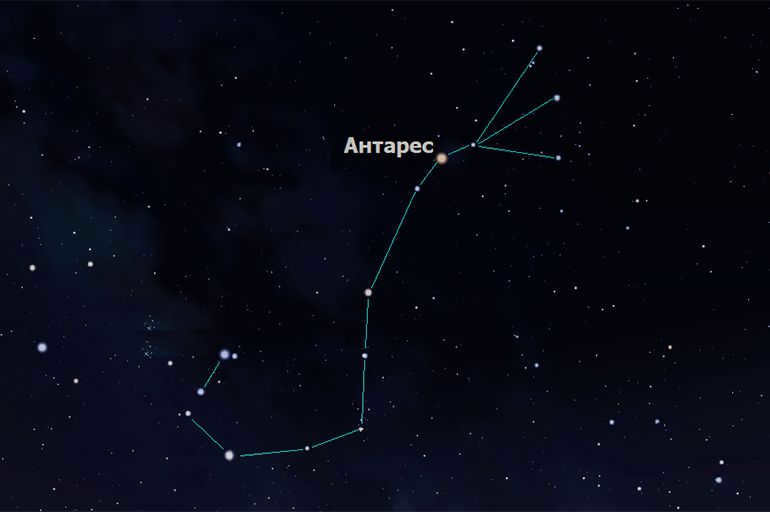
Scientists believe that this star, which bears a striking resemblance to our own Mars, is in its twilight years and is set to undergo a cataclysmic explosion in the next million years, transforming into a supernova. The star is estimated to be over 10 million years old, making it a venerable celestial body.
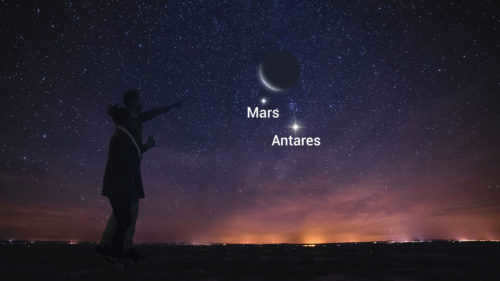
Diagram of heat transfer in stars:
CU Swan
CU Swan is a star that is one of the largest known to modern science. It surpasses the size of even Jupiter’s orbit. With a mass 25 times that of the Sun, its luminosity can be up to a million times brighter.
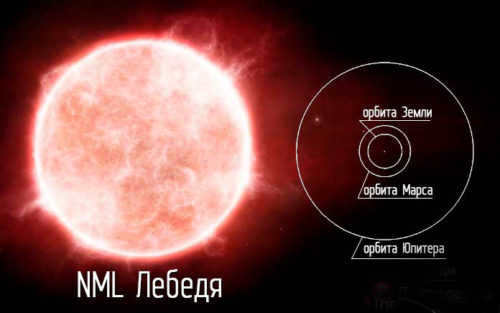
The Remarkable VY of the Big Dog
An entity that showcases a notable luminosity, magnitude, and enormity. Within our galaxy, VY of the Big Dog is identified as a celestial body that possesses a high abundance of oxygen in its elemental makeup.
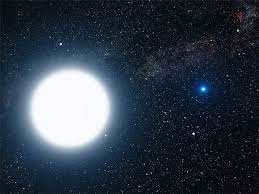
If it were to replace the Sun in our solar system, its enormity would engulf Saturn. Despite its massive size, this celestial body possesses an astonishingly low density and, consequently, a proportionately meager mass, ranging between 30 and 40 times that of our Sun.
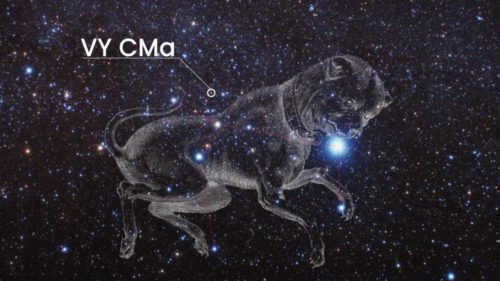
Shields’ Lack of External Signs
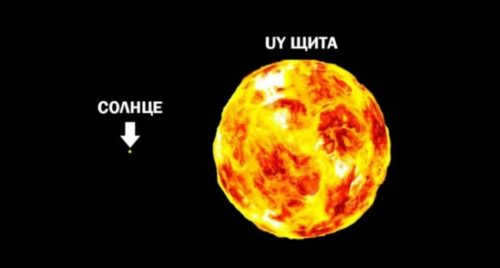
This celestial object belongs to the Shields constellation and its luminosity is 120,000 times greater than that of the Sun. If it were placed in the Sun’s position, it would encompass the entire orbit of Jupiter.
There is a significant accumulation of dust and gases surrounding this star, causing a significant decrease in its brightness.
UY Shields is known for its rapid loss of power each year, making it one of the fastest-burning stars.
Researchers estimate that UY Shield is over 10 million years old, indicating that its disappearance is imminent.
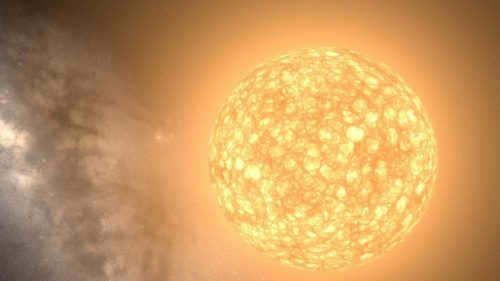
Although it is quite large and emits a significant amount of light, the star is located at such a considerable distance from our planet that it cannot be observed with the naked eye. However, it is still possible to catch a glimpse of it using powerful binoculars or a compact telescope.
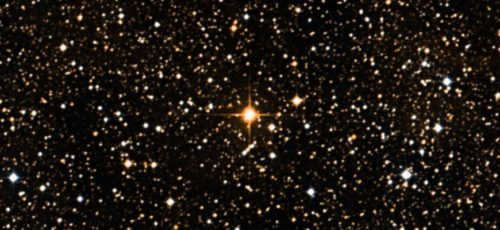
Stevenson 2—18
Until recently, scientists believed that UY Shields was the largest known object in the universe. However, the discovery of Stevenson 218 has now surpassed it, making it the current largest star in our galaxy. This massive celestial body can be found within the star cluster known as Stevenson 2.
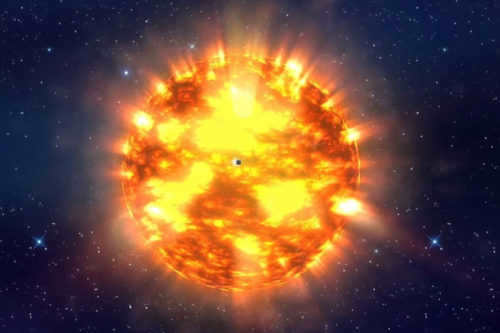
This celestial body is classified as a red supergiant and possesses a radius approximately equivalent to 2150 times that of the Sun. Additionally, its luminosity is an astonishing 440000 times that of our Sun. Notably, the volume of this star is nearly 3 billion times greater than that of our Sun.
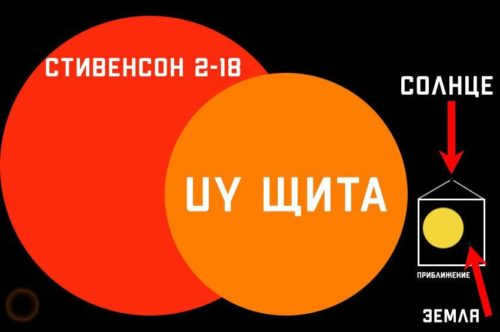
If the star Stevenson 218 were positioned at the core of our solar system, it would extend even further than Saturn’s orbit. Despite its immense proportions, this star exhibits an unusually low density and mass.
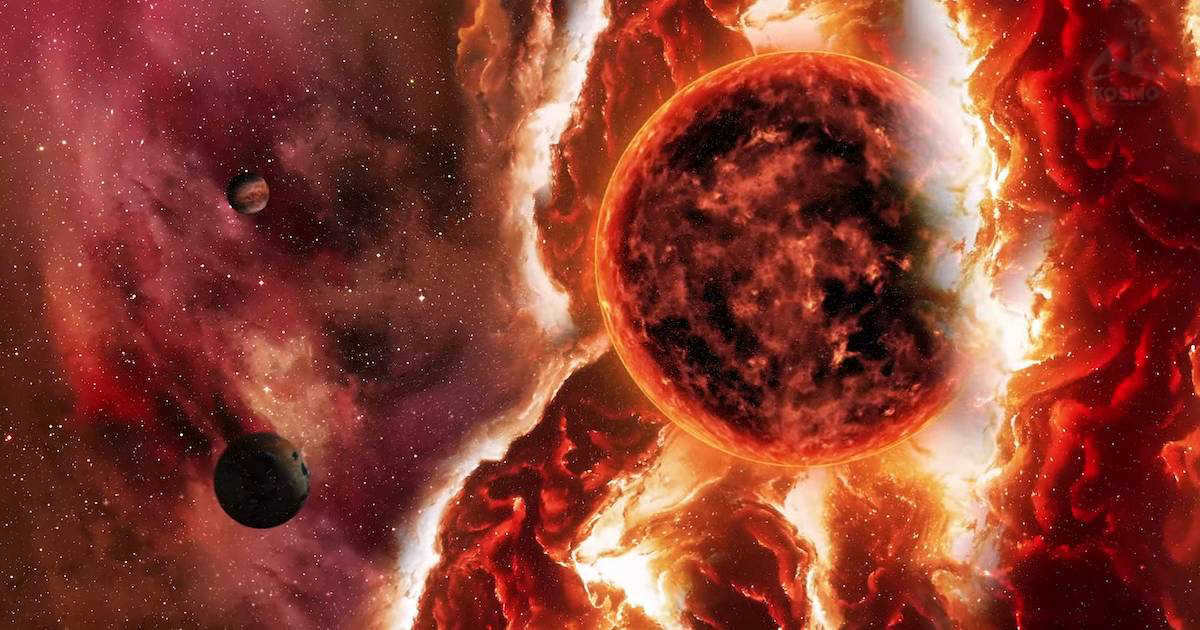
When it comes to temperature, Stevenson 218 is categorized as a cold star, with its temperature measuring around 2,900 C. In comparison, the Sun’s temperature is significantly higher, reaching approximately 5,726 C.
Attention! The tests in this category have been created by site members for personal use. The site administration does not verify any potential errors that may arise in the tests.
Test Question List
Question 1
Associate the models of global order with their respective characteristics:
Answer options
- One of the authors of the model was Aristotle
- The Sun is positioned at the center of the world
- The Earth is located at the center of the world
Question 2
What is the Greek term for geography?
Answer options
Question 3
Select three attributes of the cosmos
Options for the answer
- The Universe came into existence 12-15 billion years ago from a tiny point
- The laws governing the existence and evolution of the Universe are uniform throughout the Universe
- The Universe can be overlooked
- The Universe is enclosed by a crystalline sphere
- The Universe originated 4 billion years ago from a cloud of gas and dust
Question 4
Which characteristic is missing in stars?
Answer choices
Question 5
What is the name of the nearest star to Earth?
Answer choices
Question 6
Are the following statements true?
A) It takes over 4 years for sunlight to reach Earth.
B) The external characteristics of stars can be used to determine their age.
Answer options
Question 7
Provide the term in question.
The duration of time it takes for light from a star to travel a distance of one year, while moving at a speed of 300,000 km/s.
Question 8
Which celestial bodies do not exist in terms of size?
Answer choices
Question 9
What is the designated name of our Galaxy?
Answer options
Question 10
Are the following statements true?
A) A unique unit of measurement, the light-year, was created to measure the vast distances between stars.
Sources:
Biology Tests for Grade 5 Online Online Test Pad “> “> .keyword < color: red; >What stars are the size of stars is not a geography test for grade 5

The exam has been created to align with the specifications of the Federal State Educational Standards (second iteration).

Organisms’ Existence on Earth
Take the assessment on Chapter 3 regarding the existence of organisms on planet Earth. Carefully read the question and select the correct answer from the provided options. Proceed to the next question once you have made your choice. The total number of questions is 8, and the estimated time to complete the test is 5-7 minutes. Finally, click on the designated space to enter your name and provide it. Send me a private message with a screenshot of your completed test.

Biology Quiz – Lichens
Take this Biology Quiz on Lichens to test your knowledge. The quiz consists of 10 questions and is designed for 5th graders.

Plant Tissues
This assessment aims to assess, review, and consolidate understanding of the subject matter: “Plant Tissues”. Furthermore, it also covers inquiries related to “Biology as a Field of Study”.

The Fungal Kingdom
In the field of biology, the Fungal Kingdom is a fascinating subject that encompasses various types of fungi. This includes hat fungi, which are known for their distinctive appearance, as well as parasitic fungi. The study of fungi is of great importance, as they play a crucial role in various ecosystems and have numerous applications in medicine, agriculture, and industry.

Pets Quiz
This quiz is designed to broaden the educational sphere and draw attention to pets, focusing on their protection and the importance of caring for them.

5th Grade Biology GPR 2020 Exam
Take the Biology quiz demo version for 5th grade students. This is a sample of the GPR 2020 exam.

Life Surroundings
Take an interactive biology quiz for fifth graders that focuses on the diverse habitats that support life on our planet Earth.

Grade 5 Habitats
This assessment evaluates understanding of the subject “Habitats where organisms live”. Created for the 5th grade biology textbook by N. I. Sonin.

5th Grade Bacteria Test
This examination on the subject of “Bacteria” provides an opportunity to assess the students’ understanding of basic knowledge and general academic skills related to bacteria, including their structure, life processes, and the diseases they cause. This test is suitable for both in-person and remote lessons, as well as homework assignments.

5th Grade Biology Test for All of Russia
The All-Russian testing works (ARW) are conducted with consideration of the national-cultural and linguistic specifics of Russia’s multinational society in order to monitor the progress of the transition to the FSES and to evaluate the quality of students’ education. The objective of the UPE in the subject of “Biology” is to assess the educational training of 5th grade students based on the requirements of the Federal State Educational Standards. The VPR enables the assessment of subject-specific and meta-subject-specific achievements, including the mastery of interdisciplinary concepts and the application of universal learning actions (ALA) in educational, cognitive, and social practices. In conjunction with the information available in the educational institution, which reflects students’ individual educational paths, the results of the VPR can be utilized to evaluate personal learning outcomes. The findings of the WPR can be used by educational institutions to enhance the teaching methodology of biology at the initial stage of subject instruction, by municipal and regional government authorities responsible for educational management, to analyze the current state of municipal and regional education systems, and to formulate development programs. The utilization of the UPE results for assessing the performance of educational institutions, teachers, and municipal and regional government authorities responsible for educational management is not envisaged.
The purpose of the assessment is to evaluate comprehension, retention, and application of information related to the subject matter: “Plant tissues”. Furthermore, inquiries regarding the subject matter “Biology as a discipline” have been incorporated.

In the 5th grade Biology class, we learned about the Kingdom of Fungi. We discussed different types of fungi, such as hat fungi and parasitic fungi. We also learned about the importance of fungi in various ecosystems.

The exam has been created following the requirements of the Second Generation of the Federal State Educational Standard (FSES).
Sources:
Geography. 6th grade. Tests in USE format – test – Russian Textbook Corporation (Drofa-Ventana Publishing House) " /> " /> .keyword < color: red; >Which stars by size there are no test on geography 5th grade
Test tasks (in the format of the Unified State Examination) to assess students’ knowledge of the introductory geography course. The tasks have been compiled in accordance with the curriculum for general educational institutions and are intended to evaluate the understanding of the textbook “Earth Science. Grade 6” by V. P. Dronov and L. E. Savelieva.
The manual is intended for teachers – subject teachers, as well as being valuable for students to self-assess their mastery of the mandatory geography curriculum in the elementary level. It is especially beneficial for preparation for credit, test work, and exams. The tasks are categorized into thematic sections with varying levels of difficulty: sections “A”, “B”, and “C”. Each task is accompanied by answer keys, allowing readers to verify their answers.
Preface
Evaluating students’ knowledge and abilities is a crucial aspect of the educational process. It is essential for both teachers and students to actively participate in assessing learning outcomes and striving for high academic achievements.
Test assessments serve as a means to evaluate a learner’s skills, abilities, and knowledge. They foster independent analysis skills and enable students to efficiently retrieve relevant information from a vast pool of acquired knowledge.
This guide is designed to aid students in preparing for the Elementary Geography section of the Unified State Examination.

The manual provides 7 different options for the exam work (based on the number of sections in the textbook “Earth Science 6th grade” by V. P. Dronov, L. E. Savelieva) that are similar to the geography test in the Unified State Exam.
Each option consists of tasks from sections “A”, “B”, and “C”.
These tasks assess knowledge of all sections included in the mandatory minimum content of the elementary geography course:
Earth in the Universe. Geographical models of the Earth. Earth’s crust. Atmosphere. Hydrosphere. Biosphere. Geographical shell.
The options are designed to provide an understanding of which geographical knowledge from each topic of the elementary geography course is assessed in the Unified State Exam (including facts, geographical terms, spatial relationships, and cause-and-effect relationships).
The tasks in section “A” are relatively straightforward. Each task presents four answer options, but only one is correct.
Section “B” consists of more challenging tasks that require a concise answer about the theory covered in the previous section.
The tasks in section “C” are the most difficult and necessitate a detailed response. These tasks primarily focus on determining cause-and-effect relationships and the ability to apply acquired knowledge in practical situations.
The amount of time allotted for completing section-specific test tasks in the USE format is determined by the teacher based on the students’ level of preparedness.
Test tasks for section No. 1
“Earth in the Universe”. Earth science, 6th grade
Q1. Select the correct answer: The field of study that focuses on the Earth’s surface as a habitat where human beings originated and developed.
1. biology 2. astronomy 3. geography 4. geology
Q2. The entire existing world is:
1. The universe 2. Galaxy 3. Milky Way 4. Cosmos
Q3. The speed of light is equal to: (in km/s)
1. 150 million 2. 184 thousand 3. 300 thousand 4. 400 thousand.
Q4. What are the navigational stars that are used for orienteering called?
Q5. The asteroid belt is located between:
1. Earth and Mars 2. Earth and Venus
3. Jupiter and Saturn 4. Mars and Jupiter
Q6. Which is the smallest ocean on Earth?
1. the Pacific Ocean 2. the Indian Ocean 3. the Arctic Ocean 4. the Atlantic Ocean
А7. Find the mistake: Giant planets include:
1. Mars 2. Jupiter 3. Saturn 4. Uranus
А8. The hemisphere with the largest amount of land on Earth is:
1. the western hemisphere 2. the southern hemisphere 3. the northern hemisphere 4. there is no correct answer
А9. Earth rotates on its axis from:
1. west to east 2. clockwise 3. east to west 4. north to south
А10. Earth’s axis is tilted to the plane of its orbit at an angle (in degrees):
1. 55.6 2. 60.6 3. 55.5 4. 66.5
А11. A geographical consequence of Earth’s rotation on its axis is:
Earth is slightly flattened at the poles There is a change of seasons All moving bodies on Earth are deflected to the right All moving bodies on Earth are deflected to the left
А12. Earth orbits the Sun at a speed of (in km/s):
A13. The duration of the Earth’s existence (in billions of years):
A14. The total number of constellations in the night sky:
A15. In order to determine whether a leap year is a leap year or not, you need to divide the last two digits of the year without any remainder by:
A16. The shape of the Earth is known as:
1. sphere 2. ellipse 3. circle 4. geoid
A17. The length of the equator (in thousands of kilometers) is:
A18. The surface area of the Earth is equal to (in millions of square kilometers):
A19. The polar radius of the Earth is smaller than its equatorial radius by (in kilometers):
A20. The ancient Greek scientist who calculated the size of the Earth:
1. Pythagoras 2. Aristotle 3. Eratosthenes 4. Ptolemy
B1. Arrange the planets of the solar system in order of their distance from the Sun:
1. Mars 2. Mercury 3. Jupiter 4. Earth
B2. Calculate the number of times the Earth’s largest ocean exceeds the size of Africa.
B3. How can Polaris be located in the night sky?
C1. What are the geographical effects of the Earth’s rotation on its axis?
C2 What constitutes the solar system? Which celestial bodies are included in it?
Earth travels around the Sun at a velocity of km/s.
Everyone is familiar with the appearance of stars in the night sky. Small, bright lights radiating a cold white glow. In ancient times, people struggled to find an explanation for this phenomenon. Stars were believed to be the eyes of deities, the souls of departed ancestors, guardians and protectors, watching over humanity in the darkness of the night. It never occurred to anyone during that period that the Sun was also a star.
Understanding the Nature of Stars
It took many centuries for humanity to gain an understanding of the true nature of stars. The various types of stars, their unique characteristics, and the complex chemical and physical processes occurring within them represent a relatively new field of knowledge. In ancient times, astronomers lacked the knowledge to comprehend that stars were not simply tiny lights, but rather immense balls of red-hot gases where thermonuclear fusion reactions take place.
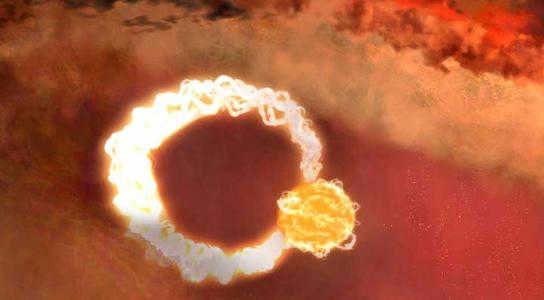
The stars exhibit a lack of external signs due to thermonuclear fusion. It is a curious paradox that the faint starlight is actually the blinding radiance of a nuclear reaction, while the comforting warmth of the sun is the tremendous heat of millions of kelvins.
All of the stars visible in the sky without the aid of a telescope are located within the Milky Way galaxy. Our own star, the Sun, is also a part of this stellar system and is situated on its outer edge. It is difficult to fathom what the night sky would appear like if the Sun were positioned at the center of the Milky Way. This is because the galaxy contains over 200 billion stars.
A brief overview of the history of astronomy
Ancient civilizations had a profound understanding of the stars in the night sky. The Sumerians, for example, identified individual constellations and devised the concept of the zodiacal circle. They were also the first to calculate the division of the complete angle of 360 degrees. Additionally, they developed a lunar calendar that was synchronized with the solar calendar. The Egyptians believed that the Earth was the center of the universe, but they also recognized that Mercury and Venus orbited the Sun.
In China, the study of astronomy as a scientific discipline dates back to the end of the third millennium BC. The first observatories in China were established in the XIII millennium BC.

The first observatories emerged in the 12th century BC. They were dedicated to the study of lunar and solar eclipses, enabling researchers to comprehend their origins and even predict future occurrences. These early observatories also observed meteor showers and tracked the paths of comets.
The ancient Incas possessed knowledge about the distinctions between stars and planets. There is indirect evidence suggesting that they were aware of Jupiter’s Galilean satellites and the atmospheric blurring effect on the disk of Venus.
The ancient Greeks were able to provide evidence for the spherical shape of the Earth and propose the idea of a heliocentric system. They attempted to calculate the size of the Sun, although their calculations were incorrect. However, the Greeks were the first to suggest that the Sun was larger than the Earth, challenging the previous belief based on visual observations. The Greek astronomer Hipparchus was the first to create a catalog of celestial bodies, classifying stars based on their brightness. In this scientific work, Hipparchus identified six levels of brightness, with a total of 850 stars included in the catalog.
What caught the attention of ancient astronomers
The original classification of stars was based on their brightness, which was the only criterion available to astronomers with just a telescope. Stars that were the brightest or had unique visible properties were given their own names, with each nation having its own naming conventions. For example, Deneb, Rigel, and Algol are Arabic names, Sirius is Latin, and Antares is Greek. Polaris, on the other hand, has its own name in every nation. It is one of the most important stars in a practical sense because its coordinates in the night sky remain unchanged despite the Earth’s rotation. While other stars move across the sky from sunrise to sunset, Polaris stays in the same location, making it a reliable reference point for sailors and travelers. Despite common misconception, Polaris is not the brightest star in the sky and does not stand out in terms of size or brightness. It can only be found if you know where to look, as it is located at the very end of the handle of the Little Bear constellation.
What is the foundation of stellar categorization?
Contemporary astronomers, when discussing the various types of stars, are unlikely to mention factors such as the intensity of their radiance or their position in the night sky. Unless, of course, it is in the context of a historical overview or a lecture targeted towards an audience with minimal knowledge of astronomy.
The present-day categorization of stars is primarily based on their spectral analysis. Additionally, the mass, luminosity, and radius of these celestial bodies are often provided. All of these parameters are measured relative to the Sun, with its characteristics serving as the standard units of measurement.
One key criterion for star classification is the absolute stellar magnitude. This refers to the apparent brightness of a celestial body in the absence of an atmosphere, hypothetically situated at a distance of 10 parsecs from the observation point.
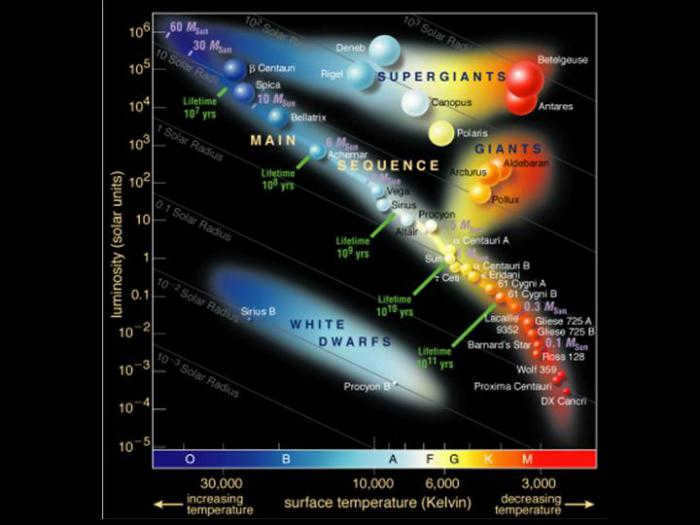
Furthermore, variations in brightness and the size of stars are taken into consideration. Currently, stars are classified based on their spectral class and subclass, which provides more detailed information. Astronomers Russell and Herzsprung independently studied the relationship between luminosity, absolute stellar magnitude, surface temperature, and spectral class of stars. They created a diagram with corresponding coordinate axes and discovered that the arrangement of stars was not random at all. The stars on the diagram were grouped into distinct categories. By knowing the spectral class of a star, the diagram allows for the determination of its absolute stellar magnitude with reasonable accuracy.
Formation of Stars: A Closer Look
This diagram presents compelling evidence supporting the contemporary theory of star formation and evolution. The graph clearly illustrates that the largest group of stars falls into the category known as the main sequence. These stars are currently at the most common stage of development in the entire Universe. This phase represents the point at which a star’s energy expenditure through radiation is balanced by the energy gained from thermonuclear reactions. The duration of this stage depends on the star’s mass and the proportion of elements heavier than helium.
The prevailing theory of stellar evolution posits that stars undergo an initial stage of formation and development.
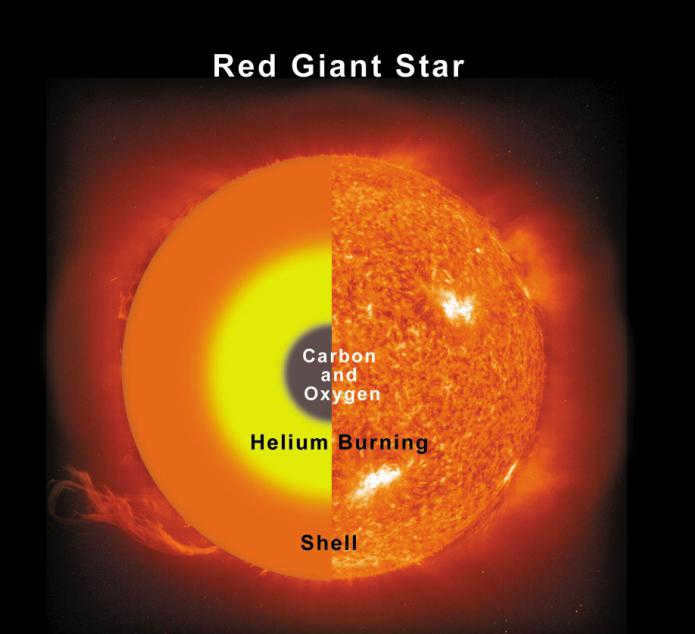
Astronomers have discovered a remarkable phenomenon in the universe – a massive gas cloud that transforms into a ball due to its own gravitational pull. As this gas cloud undergoes compression, the gravitational energy is converted into thermal energy, causing the gas to heat up. Once the temperature reaches a staggering 15-20 million K, a powerful thermonuclear reaction ignites within the newly formed star. This reaction brings a halt to the process of gravitational contraction, marking the birth of a star.
The primary phase of a star’s existence
Initially, the young stellar object experiences a dominance of hydrogen cycle reactions within its interior. This particular stage is regarded as the lengthiest period in a star’s life. Stars at this developmental stage are classified and depicted in the most massive segment of the main sequence diagram mentioned above. As time progresses, the hydrogen within the star’s core becomes depleted and transforms into helium. As a result, thermonuclear fusion can only occur at the periphery of the core. The star grows brighter, its outer layers expand significantly, and the temperature decreases. Eventually, the celestial body transitions into a red giant. This specific phase represents a crucial stage in a star’s lifespan.
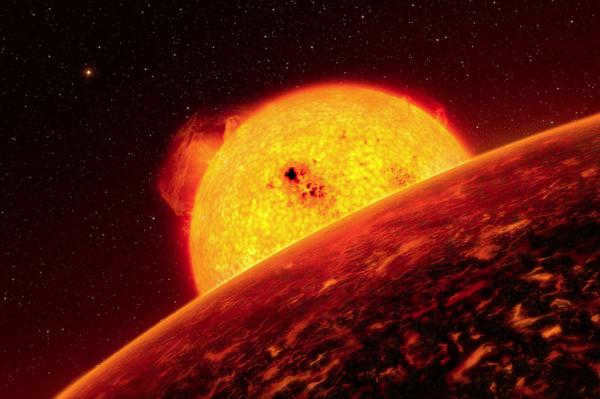
This version of the text is significantly shorter compared to the previous one. The destiny of this star is not well understood. There are various hypotheses, but none of them have been reliably confirmed yet. The most commonly accepted theory suggests that when there is an excessive amount of helium, the core of the star, unable to support its own weight, contracts. This contraction leads to an increase in temperature, which eventually triggers a thermonuclear reaction of helium. The extremely high temperatures cause the star to expand once again, transforming into a red giant. According to scientists, the fate of the star depends on its mass. However, these theories are only the result of computer simulations and have not been confirmed through observations.
Cooling Stars
It is believed that low-mass red giants will undergo a process of contraction, transforming into dwarfs and gradually cooling off. Stars of medium mass, on the other hand, may evolve into planetary nebulae, with the core remaining at the center of this formation with no external covering, gradually cooling down and eventually becoming a white dwarf. If the central star emits a significant amount of infrared radiation, it can create conditions for the activation of a cosmic maser in the expanding gas envelope of a planetary nebula.
Massive luminaries, as they contract, can reach such high levels of pressure that electrons are physically crushed into atomic nuclei, resulting in the transformation into neutrons. This is due to the absence of electrostatic forces.
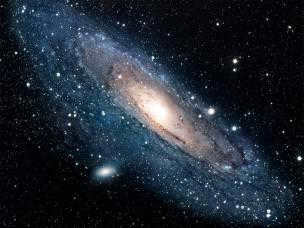
The stars have different sizes and classifications. In some cases, stars can shrink to a few kilometers in size, becoming 100 million times denser than water. These stars are called neutron stars and are essentially enormous atomic nuclei.
On the other hand, supermassive stars continue to exist and undergo thermonuclear reactions, synthesizing helium into carbon, then oxygen, and eventually forming silicon and iron. This process leads to a stage where thermonuclear reactions and supernova explosions occur. Supernovae can then either transform into neutron stars or, if their mass is large enough, continue to compress and form black holes.
Dimensions
The classification of stars by size can be determined in two different ways. One way is to measure the physical size of a star, which is typically done by measuring its radius. The radius is measured in units of the Sun’s radius. Stars can be classified as dwarfs, medium-sized stars, giants, or supergiants based on their physical size. Interestingly, the Sun itself is classified as a dwarf star. Neutron stars, on the other hand, can have radii of just a few kilometers, while supergiants can be large enough to fit the orbit of the planet Mars.
Another way to classify stars by size is to consider their mass, which is closely related to their diameter. Generally, larger stars have lower densities, while smaller stars have higher densities. However, this criterion is not as widely applicable. There are very few stars that are 10 times larger or smaller than the Sun. Most stars fall within the range of 0.03 to 60 solar masses. The density of the Sun, which serves as a reference point, is 1.43 g/cm3. In comparison, white dwarfs can have densities as high as 1012 g/cm3, while the densities of rarefied supergiants can be millions of times less than that of the Sun.
In the conventional categorization of stars, the distribution of masses is as follows: small stars have masses ranging from 0.08 to 0.5 solar masses, moderate stars have masses ranging from 0.5 to 8 solar masses, and massive stars have masses of 8 solar masses or more.
Stars Classification: From Blue to White
The classification of stars based on color actually relies on spectral characteristics rather than the visible luminosity of the star. The emission spectrum of a star is determined by its chemical composition, which in turn affects its temperature.
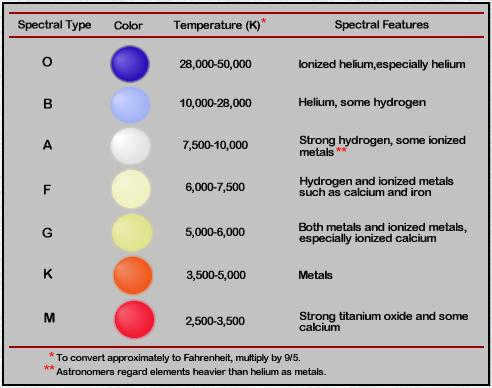
The Harvard classification, which was established in the early 20th century, is the most widely used system for classifying stars by color. According to this classification, stars are divided into 7 types.
One of the classifications in this system is class O, which includes stars with the highest temperature ranging from 30,000 to 60,000 K. These stars have a blue color and can have a mass of up to 60 solar masses and a radius of 15 solar radii. The hydrogen and helium lines in their spectrum are faint. The luminosity of these stars can reach up to 1 million 400 thousand solar luminosities.
Class B stars consist of stars with temperatures ranging from 10 to 30 thousand K. These celestial objects have a blue-white color, with a minimum mass of 18 solar masses and a minimum radius of 7 solar radii. The lowest luminosity observed in this class is 20 thousand solar luminosities, and their spectrum shows enhanced hydrogen lines with average values.
On the other hand, Class A stars have temperatures ranging from 7.5 to 10 thousand K and appear white in color. The minimum mass for these celestial bodies is 3.1 solar masses, with a minimum radius of 2.1 solar radii. The luminosity of Class A stars ranges from 80 to 20 thousand solar luminosities. These stars exhibit strong hydrogen lines in their spectrum and also show the presence of metal lines.
Class F stars have a color that is actually yellow-white, but they appear white. Their temperature ranges from 6 to 7.5 thousand K, with a mass that varies from 1.7 to 3.1 solar masses, and a radius that ranges from 1.3 to 2.1 solar radii. The luminosity of these stars varies from 6 to 80 solar luminosities. The hydrogen lines in their spectrum are weakened, while the lines of metals are strengthened.
Therefore, all types of white stars fall within the range of classes A to F. Following the classification, yellow and orange stars come next.
Stars of Different Colors: Yellow, Orange, and Red
Stars can be categorized by their color, which is determined by their temperature, size, and luminosity. The color of a star changes from blue to red as its temperature decreases and its size and luminosity decrease.
Class G stars, such as our Sun, have a temperature range of 5,000 to 6,000 K and appear yellow in color. These stars have a mass range of 1.1 to 1.7 times that of the Sun, and a radius range of 1.1 to 1.3 times that of the Sun. Their luminosity ranges from 1.2 to 6 times that of the Sun. Class G stars have intense spectral lines of helium and metals, while their hydrogen lines are weaker.
Stars belonging to class K have a temperature between 3,500 and 5,000 K. They appear yellow-orange, but their true color is orange. These stars have a radius range of 0.9 to 1.1 times that of the Sun, and a mass range of 0.8 to 1.1 times that of the Sun. Their brightness ranges from 0.4 to 1.2 times that of the Sun. The hydrogen lines in class K stars are almost imperceptible, while the metal lines are very strong.
The most fascinating and tiniest stars belong to the M class. Their temperature ranges from 2.5 to 3.5 thousand K, giving them a distinct red appearance, although in reality these celestial objects have an orange-red hue. These stars have a mass ranging from 0.3 to 0.8 times the mass of our Sun, and their radius falls between 0.4 and 0.9 times the radius of our Sun. Their luminosity is only 0.04 to 0.4 times that of our Sun. These stars are in the final stages of their life cycle. The only celestial objects that are colder than M class stars are the recently discovered brown dwarfs, which have their own separate class known as M-T.
The unaided human eye can perceive a vast multitude of celestial bodies in the dark sky, away from urban lights. By utilizing a telescope, an even greater number of luminous entities can be observed. Advanced scientific apparatus enables the determination of their color, size, and luminosity. For a considerable period, the inquiry “what materials compose stars?” has been a subject of intense debate within the realm of astronomy. Yet, this puzzle has been unraveled. Presently, scientists possess knowledge regarding the composition of the Sun and other stellar bodies, as well as how this characteristic transforms over the course of cosmic evolution.
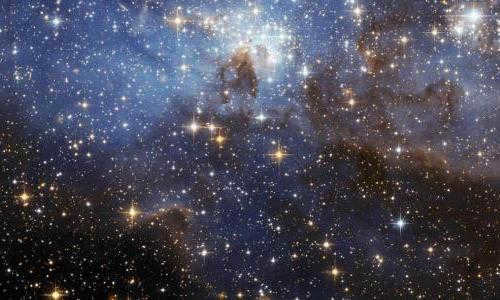

Approach
The discovery of the composition of stars was only achieved by astronomers during the mid-19th century. This breakthrough came with the introduction of spectral analysis into the toolkit of space researchers. This method relies on the unique property of atoms from different elements to emit and absorb light at specific resonance frequencies. Consequently, the resulting spectrum displays distinct dark and light bands that correspond to the particular substance being analyzed.
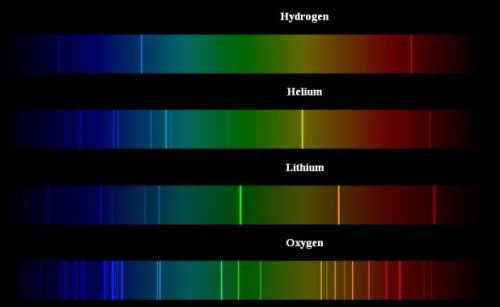

The composition of stars can be determined by analyzing the pattern of absorption and emission lines emitted by different light sources. Spectral analysis is a valuable tool for scientists in understanding the internal processes of stars that are not directly observable. By studying the data obtained from spectral analysis, researchers can gain insights into the composition and characteristics of stars.
What is the composition of a star?
A star in the sky is predominantly composed of hydrogen and helium, which make up approximately 98% of its matter. The remaining 2% consists of heavier elements such as carbon, oxygen, and metals. These elements are responsible for the diversity observed in planets and stars throughout the Universe. Although stars and planets share the same basic building blocks, variations in the concentration of individual substances, object mass, and internal processes contribute to the unique characteristics of cosmic bodies.
When classifying stars, their mass and metallicity, which refers to the abundance of elements heavier than helium, are the primary criteria. Metallicity plays a crucial role in determining a star’s age and future. By analyzing this parameter, astronomers can gain insights into the evolutionary path of a star.
Structure inside
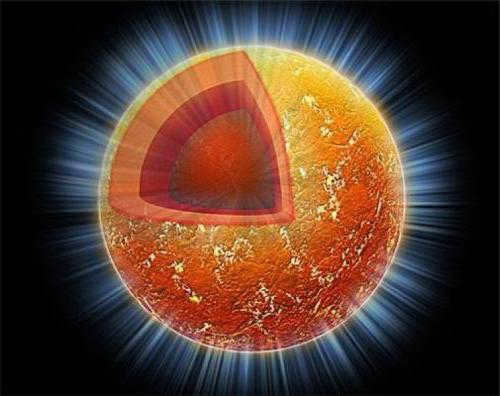
The absence of any external signs does not prevent stars from moving throughout the Galaxy due to the forces of gravitational compression. Additionally, these stars play a role in the distribution of elements within their internal structure. Within the core, all metals (which, in the field of astronomy, refer to any elements heavier than helium) are concentrated. Stars are formed from a combination of dust and gases. If a star contains only helium and hydrogen, the helium forms the core while the hydrogen forms the shell. Once the mass reaches a critical point, a thermonuclear reaction occurs and the star begins to burn.
Stars through the ages
The cores composed solely of helium were initially populated by first-generation stars, also known as population III stars. These stars formed some time after the Big Bang and were distinguished by their immense sizes, comparable to the dimensions of modern galaxies. Within these stars, helium gradually underwent synthesis to produce other elements, commonly referred to as metals. Eventually, these stars reached the end of their lives and exploded in supernovae, dispersing the synthesized elements which then served as the building blocks for subsequent stars. The second-generation stars, known as population II stars, exhibit lower metallicity. The third generation stars, which include our Sun, are the most recent luminaries discovered. Notably, these stars possess a higher metallicity compared to their predecessors. While scientists have not yet detected younger stars, it can be confidently predicted that they will possess an even greater size in this parameter.
The defining factor
The composition of stars has a significant impact on their lifespan. The presence of metals in the star’s core affects the occurrence of thermonuclear reactions. The greater the abundance of metals, the earlier the star will ignite and the smaller its core will be at that point. This has the consequence of reducing the amount of energy emitted by the star over time. Consequently, stars with a higher metal content have a longer lifespan, as their fuel reserves can last for billions of years. For instance, scientists estimate that the Sun is currently at the midpoint of its life cycle, having existed for approximately 5 billion years with another 5 billion to go.
As per the theory, the Sun originated from a gas-dust cloud that was rich in metals. It is classified as a population I star, also known as a third generation star. The presence of metals in its core, along with a slower fuel combustion process, allows for a consistent release of heat. This stable heat release was one of the necessary factors for the emergence of life on Earth.
The development of celestial bodies
Stars have a fluctuating composition. Let’s examine the components that make up stars during different phases of their development. However, let’s first recall the various stages that a star goes through from its formation to the end of its life cycle.
During the initial phase of development, stars are situated on the main sequence of the Hertzsprung-Russell diagram. During this period, hydrogen is the primary fuel in the core, where four hydrogen atoms combine to form one helium atom. This is the phase in which stars spend the majority of their lifespan. The subsequent stage of development is the red giant phase. These stars have much larger sizes than their initial state, while their surface temperature is lower. Stars similar to the Sun conclude their lives in the subsequent phase, transforming into white dwarfs. More massive stars, on the other hand, evolve into neutron stars or black holes.
The initial phase of evolution
The transition from one stage to another in terms of luminosity is caused by thermonuclear processes occurring in the star’s core. The fusion of hydrogen results in an increase in the amount of helium, leading to the expansion of the nucleus and the reaction area. Consequently, the temperature of the star increases. Hydrogen, which was previously not participating in the reaction, now starts to contribute to it. This disrupts the equilibrium between the shell and the nucleus, causing the former to expand and the latter to contract. Simultaneously, the temperature rises significantly, triggering the combustion of helium. This process gives rise to heavier elements like carbon and oxygen. Eventually, the star departs from the main sequence and transforms into a red giant.
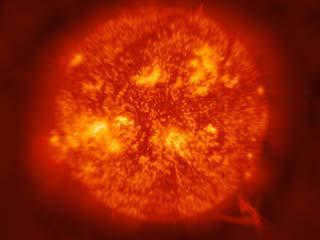
The following segment of the process
A red giant is a celestial body characterized by a significantly expanded outer layer. Once our Sun reaches this phase, it will encompass the entire region up to the orbit of Earth. Under such circumstances, the existence of life on our planet would be impossible to contemplate. Within the core of the red giant, carbon and oxygen are synthesized. Concurrently, the star continuously sheds mass due to the effects of stellar wind and ongoing pulsation.
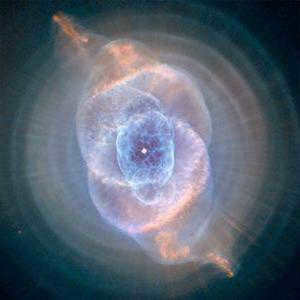
Different phenomena occur in objects of medium and large mass. The vibrations of stars belonging to the initial category lead to the shedding of their outer layers, which then form a planetary nebula. As the core exhausts its fuel, it gradually cools down and transforms into a white dwarf.
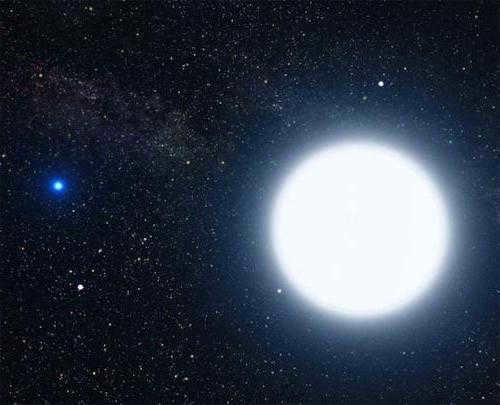
The development of massive stars
Stars with immense masses in their final stages of development are composed not only of hydrogen, helium, carbon, and oxygen. During the red giant phase, the cores of these stars become compressed with tremendous force. As the temperature increases, carbon starts to undergo combustion, followed by its byproducts: oxygen, silicon, and iron. The synthesis of elements stops at this point, as it is impossible for heavier nuclei to form from iron with the release of energy. When the mass of the core reaches a certain value, it collapses, triggering a supernova in the sky. The fate of the object once again depends on its mass, as it may become a neutron star or a black hole.
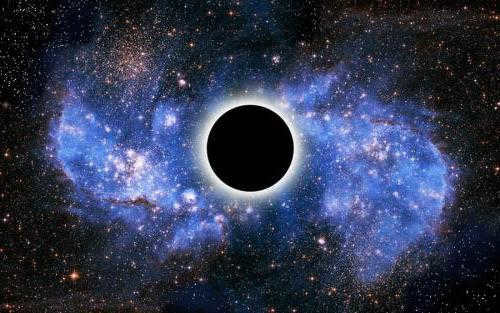
Following a supernova explosion, the elements that were synthesized during the event disperse throughout the surrounding space. It is highly probable that new stars will eventually form from these dispersed elements.
Unique Examples
It is a breathtaking experience when we can not only identify familiar stars in the sky, but also remember their classification and composition. Let’s explore the stars that form the famous Big Dipper. This constellation consists of seven stars, with Aliot and Dubhe shining the brightest. The second star is actually a triple system, with one component already undergoing helium burning. The other two, like Aliot, are still on the main sequence. In the same region of the Hertzsprung-Russell diagram, we can find Fekda and Benetash, which also contribute to the iconic dipper shape.
The most brilliant star in the night sky, Sirius, is a binary system. One of its components is classified as a main sequence star, while the other is a white dwarf. On the branch of red giants, we can locate Pollux (alpha Gemini) and Arcturus (alpha Volopassus).
What are the constituents of each galaxy? How many stars exist in the Universe? These queries are challenging to provide exact answers for. The Milky Way alone contains billions of stars. Numerous of these have already been observed through telescopes, and new ones are constantly being found. We generally have knowledge of the gases that comprise stars, but new celestial bodies often do not conform to the established understanding. The cosmos harbors numerous enigmas, and numerous objects and their characteristics are awaiting their explorers.
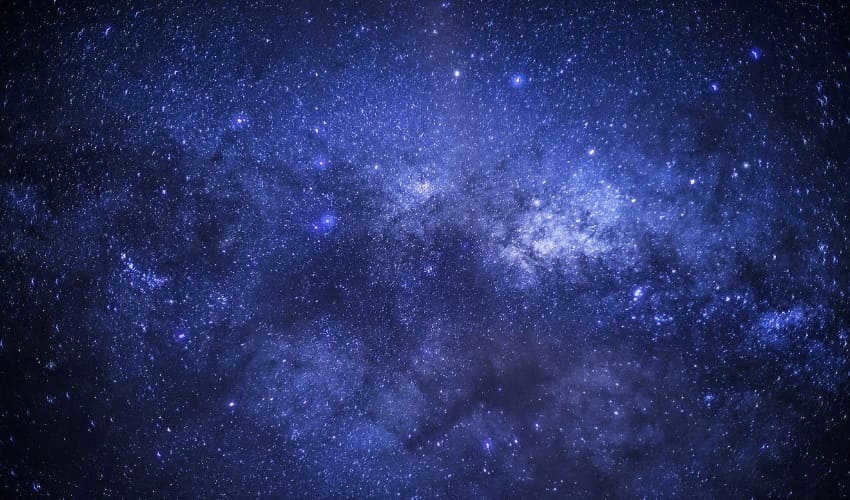
What exactly are stars? Stars are massive celestial bodies formed from a combination of gas and dust, where thermonuclear reactions occur.
In the vast expanse of the night sky, stars, unlike planets, appear to remain motionless, which is why ancient astronomers classified them as a distinct group of cosmic entities.
The renowned British astronomer and astrophysicist Arthur Eddington once claimed that stars are the simplest things in the universe.
Perhaps the scientist’s assertion was based on the fact that every star is essentially a sphere with equal radii, making it possible to comprehend the changing physical properties of the star’s substance along a single radius, thus unraveling the mysteries of these celestial bodies.
It is not as simple as it seems! It is impossible for us to go beyond the surface of the Sun, even though it is the closest star to us.
As a result, all our understanding of the processes that take place inside the Sun, how the star functions and sustains itself, and where its immense energy comes from, is solely based on general physical laws and theories about the evolution of the Universe.
The only way to validate these theories is to create a computer model of the star. If the model produces the same luminosity, mass, and size as the observed characteristics of the actual star, then the scientists’ assumptions are correct.
How do stars differ in size? Stars come in a wide range of sizes. The diameter of “white dwarfs” is much smaller than that of the Sun and is similar to the size of the Earth. Even smaller neutron stars have a diameter of just a few kilometers.
What is the composition of stars?
The field of astronomy has long been puzzled by the question of what stars are made of. Skeptics have mocked the idea that this knowledge would ever be attainable. However, thanks to the study of physics, we now have an answer.
Astronomers and astrophysicists have utilized a powerful technique called spectral analysis to peer into the depths of stars, nebulae, and even galaxies that are incredibly far away.
When certain substances are in specific states, they emit or absorb light. By placing a prism in the path of light emitted by a hot body, we can observe a beautiful rainbow spectrum.
Similarly, if we introduce a small amount of a substance into a flame, we will observe specific bright lines at consistent positions in the spectrum.
Each chemical element produces a distinct set of lines. If light passes through a gas or vapor of other substances, black lines will appear in the spectrum at the same positions as the emission lines of those substances that make up the “barrier”. This allows us to determine its composition.
Spectra provide information not only about the composition of celestial objects, but also about their speed and direction of motion. We have already mentioned the “red shift” in the spectra of distant galaxies. There is also a “violet shift” that occurs when a body moves towards the observer.
Modern astronomers use spectrometers in conjunction with telescopes to study the visible light spectra of celestial bodies.
The importance of a star’s mass
The mass of a star is a crucial factor that determines its fate. The entire lifespan of a star hinges on the amount of matter it has accumulated during its formation. In the core of massive stars, extreme temperatures and pressures give rise to rapid energy release.
As a result, these stars exhibit exceptionally high luminosity but quickly deplete their hydrogen and helium reserves, which are the primary fuels for sustaining thermonuclear reactions. Consequently, the lifespan of massive stars tends to be relatively short.
In contrast, low-mass stars utilize their energy more efficiently, leading to longer lifespans.
The determination of the mass of stars is achieved by astronomers through the utilization of the law of universal gravitation. This method is applicable when stars form systems with other stars. However, in the case of single stars, a less precise estimation is necessary and is based on their luminosity. It is observed that the higher the luminosity, the greater the mass of the star.
Interestingly, stars exhibit a much more significant disparity in terms of luminosity and size compared to their mass. Stars with a mass less than one-tenth of our Sun’s mass do not exist. These stars do not possess the necessary conditions for the initiation of thermonuclear reactions.
Conversely, there are also no stars with masses exceeding 150 times that of our Sun. These massive stars become highly unstable and ultimately undergo a cataclysmic event, resulting in their ignition, demise, and collapse.
How are stars categorized based on their color?
It is evident even to the naked eye that fixed stars vary in terms of both their brightness and color. As early as the 2nd century BC, the ancient Greek astronomer Hipparchus classified all stars into six classes based on their brilliance. The first magnitude stars are the brightest, while the sixth magnitude stars are the faintest.
Each stellar magnitude differs in brightness from the next class by approximately 2.5 times. Consequently, first magnitude stars are a hundred times brighter than sixth magnitude stars.
Modern astronomy has adopted more precise methods for measuring the amount of light emitted by stars. Ultra-sensitive photometers are used for this purpose. As a result, star catalogs now include not only fractional, but even negative stellar magnitudes.
The color of stars is determined primarily by the temperature of their surface. Reddish, yellow, and bluish-white stars can be observed. The highest temperatures are found in blue and white stars, reaching up to 30-50 thousand degrees.
Unusual Stars
The larger a star’s mass, the hotter it burns, the brighter it shines, and the shorter its lifespan. Through thermonuclear reactions, hydrogen in the cores of these stars transforms into helium, and then helium gradually turns into carbon, oxygen, nitrogen, and finally iron.
When a star with sufficient mass completes its life cycle, a core composed of heavy elements forms at its center.
Eventually, there comes a point in time when this nucleus loses its stability and begins to collapse catastrophically. The central region of the nucleus transforms into an incredibly dense entity known as a neutron star, while the outer layer of the star and the surrounding parts of the nucleus are expelled into the vastness of space. This event is known as a supernova explosion.
In its natural state, a neutron is an inherently unstable particle and typically undergoes decay after an average of 15 minutes. However, if a neutron is placed within a degenerate gas, all the available spaces for the particles it “desires” to decay into are already occupied, resulting in the particle becoming stable.
This process requires immense pressure, which is generated by the intense gravitational force within a neutron star’s core.
It is not yet well understood how matter behaves at such a high density. Moreover, if the density continues to increase, even stranger phenomena occur within neutron stars, such as the transformation of neutron matter into quark matter.
Neutron stars
Long before the advancements in astronomy allowed for the discovery of these unique objects in the Universe, their existence had already been predicted.
In the early 1930s, shortly after the structure of the atomic nucleus had been deciphered and the existence of “heavy” electrically neutral particles – neutrons – had been experimentally proven, the brilliant physicist Lev Landau (1908-1968) theoretically demonstrated that it was possible to detect large stable objects primarily composed of neutrons, now known as neutron stars.
In 1933, German astrophysicists Walter Baade and Franz Zwicky proposed the idea that a supernova explosion could lead to the formation of a neutron star.
However, it was not until 1967 that the first indications of these enigmatic celestial objects were uncovered, with radio astronomy playing a crucial role in advancing our understanding of them.
Variable stars
Any star has the potential to be considered variable – over time, its brilliance and even its color can undergo changes. However, these changes happen at such a gradual pace that they cannot be detected within a human lifespan. This is why the starry sky has long been regarded as a symbol of permanence and eternity.
Nevertheless, there are numerous exceptions to the seemingly unchanging stellar world. A significant group of stars exists that experience changes in brightness within relatively short time intervals, and these changes can be observed and measured using astronomical instruments.
Variable stars are those that have undergone at least one change in brightness. However, the majority of variable stars experience periodic changes in brightness, which suggests the presence of unusual physical processes occurring either near or within the star itself.
Confusing changes in the brightness of stars with their twinkling is a common mistake. Twinkling occurs because of the movement of air masses with different temperatures in the Earth’s atmosphere. However, when observed from space, stars do not twinkle. Instead, if we observe fluctuations in their brightness, we are actually looking at a variable star.
What Causes Stars to Extinguish?
Regardless of how slow the processes on stars may seem to us, they inevitably undergo a phase of “aging”. A young star, composed mostly of hydrogen, gradually exhausts its supply, with the rate of depletion increasing in proportion to the star’s total mass.
Following the depletion of hydrogen, the star transitions to burning helium, during which its nuclei combine to form carbon nuclei and release significant amounts of energy. This process continues as heavier and heavier chemical elements are synthesized, eventually leading to the formation of iron.
Stars can be thought of as cosmic “factories” for heavy elements, as the early Universe was primarily composed of hydrogen.
Eventually, the core of a star, deprived of the energy generated by thermonuclear reactions, rapidly contracts in size, loses stability, and undergoes a gravitational collapse.
An enormous explosion takes place, generating temperatures reaching billions of degrees and triggering interactions among atomic nuclei, resulting in the creation of new chemical elements, even those found at the end of the periodic table.
This explosion is accompanied by a massive release of energy and matter, and is known as a supernova explosion.
The evidence supporting these processes is the fact that areas with high densities of gas and dust, known as nebulae, are most abundant in young, or hot, stars and their clusters.
By analyzing the composition of a star’s substance through spectroscopy, scientists can learn a great deal about its age and the current stage of its “stellar biography.”
Alfonso the Wise Observatory
Methods for assessing concrete quality

